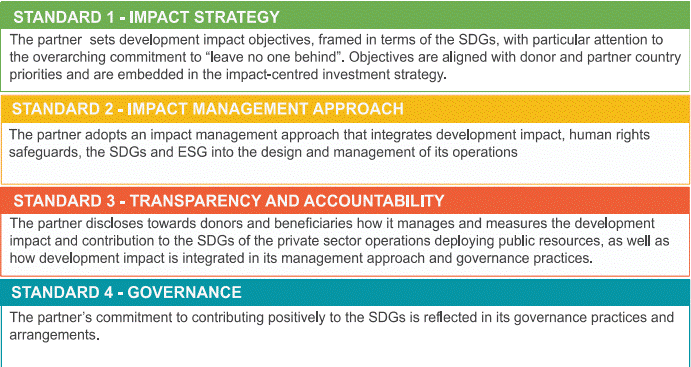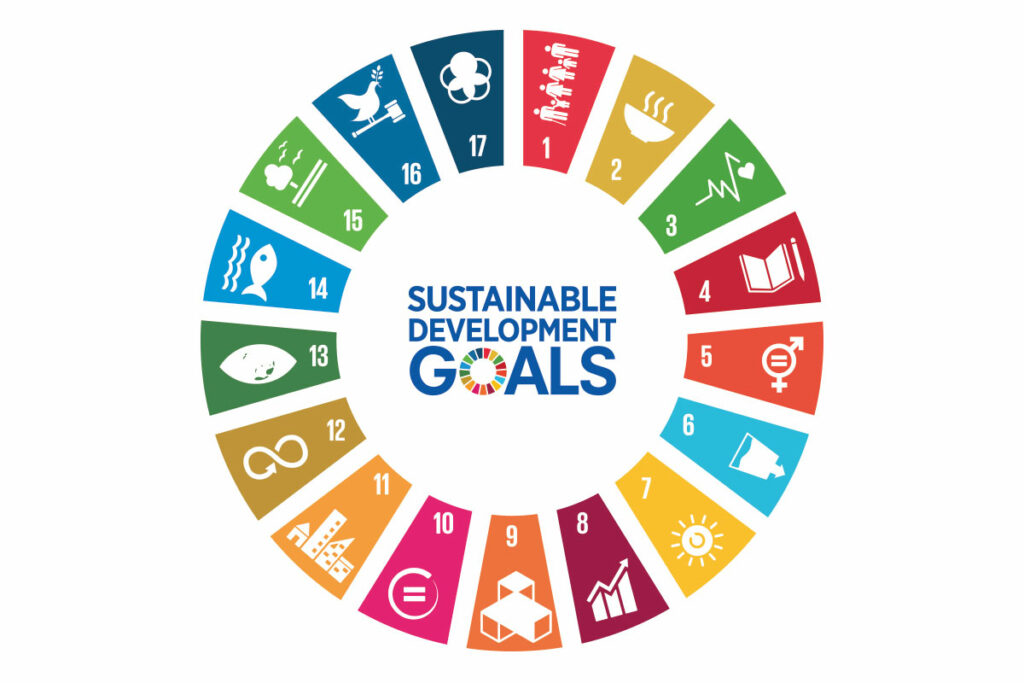In Septembre 2015, 193 UN member States adopted The 17 Sustainability Development Goals embedded in the 2030 Agenda. In so doing, they sought to ensure a sustainable transition around the world. They also agreed to an international review mechanism, for States to report progress annually… albeit on a voluntary basis. Now, implementing the SDG requires a sustained commitment from both governments and economic players (companies, communities, civil society organizations, academia…).
Despite the common trajectory set forth by the SDG, generating a collective and universal dynamic remains strenuous. Economic players (companies, investors and governments) indeed do not always find common ground on the necessary methods and means of action. As it stands, the scale of action differs greatly from one player to another.
SDG impacts metrics must consequently be adapted to their specific ecosystems. This in turn calls for harmonization, transparency and comparability efforts to bolster SDG impact measurement tools, at the corporate level as well in governments and across territories. That said, terminology, regulations and reporting methodologies abound, rendering impact measurement even more complex. The creation of an international reference tool would greatly enhance ODD impact metrics, notably in terms of comparabily and accountability. This is key to drive the necessary investment towards the SDG.
Understanding the Global Trajectory Conveyed by the SDGs
Financial, political and corporate efforts must imperatively converge towards the single common goal of achieving SDGs by 2030. For reference, the global GDP sat squarely at $80 trillion in 2017. Financial assets amounted to some $250 trillion. On the other hand, completing the SDG calls for financing estimated between $2.5 trillion and $3 trillion per year. While this is certainly no small amount, in the end, it corresponds to just 1% of the world’s financial assets.
Putting these numbers in perspective helps send out a strong positive signal: we collectively have the capital. So can we put it to better use? In other words, financing the SDG, particularly in emerging and developed countries, is therefore feasible. Yet banks, institutional investors and asset managers must consider how best to redirect finance to catch up. That is precisely why the United Nations’ Development Program collaborated with the Global Investors Alliance for Sustainable Development. They launched a tool to support redirected investment towards the SDGs, highlighting over 200 investment opportunities across 14 countries. In short, it is high time to align supply and demand, effectively sending out investors and companies their marching order to funnel actual SDG impact on the ground.
Beyond financing, another challenge arises from an increasing tendency of SDG-Washing. With that in mind, Ksapa outlined 5 key points of progress for companies and investors to achieve the 2030 Agenda.
Zooming on SDG Impact Measurement
Before delving into aligning private sector commitments and SDG impact metrics, it is important we describe the current state-of-play at a macro-economic level.
There are in fact 5 key action points business and investors can undertake to achieve greater alignment:
- Direct private investment towards SDG action, with the necessary scale and speed. To that end, the European Union’s Sustainable Finance Disclosure Regulation, Green Taxonomy and upcoming Corporate Sustainability Reporting Directive will doubtlessly play a key role in mobilizing finance…. at least within the bloc;
- Encouraging the potential of digital technologies to streamline SDG impact measurement;
- Accelerate long-term investments in resilient infrastructure. The Biden administration for instance issued a $2 trillion stimulus package to bolster the clean energy transition, encouraging a clear operational shift across the Americas;
- Encourage risk assessment across investment transactions, including a thorough review of investments and their projected impact – including via compliance exercises;
- Strengthen the global financial safety net and debt sustainability framework to avoid past upheavals.
A 3-Step to Implementing Robust SDG Impact Measurement
The underpinning issue lies in aligning corporate SDG pledges and metrics for actual impact on the ground. Now is indeed no longer atime for windowdressing. Ksapa therefore outlines a 3-step action plan to implement robust SDG impact measurement:
- Track and demonstrate, though clear data points, the results of the latest actions implemented in favor of priority SDG for the organization and its specific activities.
- Commit to initiatives such as the IRIS+ benchmark and the DIME program. They indeed ensure a minimum level of consistency across corporate impact statements and performance. This in turn is supportive of investment decision-making.
- Prioritize quantitative or qualitative indicators and develop more granular analyses for key stakeholders.
Cross-Sector Methodologies to Date
In a recent webinar, Ksapa convened experts from across the board to discuss the ongoing standardization of SDG impact metrics. Each outlined key tools supportive that broader dynamic.
New SDG Impact Standards at the OECD
Priscilla Boiardi, an OECD expert and policy analyst on private finance for sustainable development, introduced the “Impact Standards for Financing Sustainable Development” (IS-FSD). Approved last March, the tool was designed by the OECD and UNDP to provide a precise framework for SDG investment decisions among development institutions, donors and all private players. Thay way, it intends to bolster action and measure the impact of these commitments against the SDG.
At its core, the new tool streamlines the standardization, proper operationalization and evaluation of SDG impact metrics. This is intended to improve the transparency of SDG pledges, while maximizing positive contributions overall. The resulting framework includes 4 standards – that is, strategy, management approach, transparency and governance. This roadmap effectively informs decision-making in light of increasing SDG information and regulation.

SDG Investments Led by the Climate Policy Institute
We also welcomed Carla Orrego to our webinar. A project manager at the Global Innovation Lab for Climate Finance, she contributes to indentifying, developing and implementing innovative financial instruments capable of leveraging mobilizing billions. Private investments in particular are directed towards climate action and sustainable development. In 2019, the Lab notably oversaw direct investments in agriculture, sustainable urban development and renewable energy. It currently holds over $2.5 billion in equity.
Impact metrics are logically the bread and butter of the Lab. It indeed assesses its financial instruments against various lenses, including SDG impact. They must indeed play a catalytic role, by being fully replicable and generating major socio-economic and environmental impacts. Accountability over these impacts necessarily involves developing impact metrics, which the Lab assesses along the following lines:
- The economic impact of successfully implementing a financial solution
- Demonstrated results that go beyond a “business as usual” scenario
- The SDG impact track-record of each solution, namely its specific contributions and progress points. Organizations can also develop specific measures for select SDG. This notably includes the reduction of carbon emissions, the generation of megawatts of renewable energy or job creation.
The Lab’s portfolio covers all the 17 SDG, with a focus on which of these help organizations wield the most significant contribution possible (e.g. SDG 13 : Climate Action).
Private Sector Perspectives on SDG Impact Measurement
Finally, we opened the floor to Iberdrola’s CSR Director, Roberto Fernandez Albendea, who shared his perspectices on how the private sector has embraced SDG impact metrics. Iberdrola is indeed a major energy provider, lending access to electricity to 16 million people across 40 countries, including the United States and Brazil.
Roberto Fernandez Albendea stressed the importance of adopting a long-term logic in integrating the SDG framework in overarching corporate strategies. Iberdrola, having made public commitments to that effect, embedded SDG impact in all Group processes. That way, the SDG would systematically inform all corporate activities. The Group in fact carried out a materiality analysis to identify its priority SDG. The result was a set of 20 issues which we structured into the 5 pillars of the group’s SDG strategy. Below is a non-exhaustive list of the corresponding performance indicators:
- Carbon footprint
- Number of renewable energy production facilities
- Quantity of “clean” energy produced
- CO2 emissions as per the company’s Scope 1
- Number of jobs created
- Amount of CO2 emmitted per kilowatt of electricity
- Gender pay gap – to address
- Corporate participation in major fora (Sustainable Financing Platform, UN global compact, The World Business council, Race to Zero Alliance…)
Conclusion : A Call for Concerted Action Towards Completing the SDGs
Private actors have repeatedly called for greater consistency across reporting initiatives, as recalled by speaker Roberto Fernandez Albendea. Impact metrics are in fact only as effective as the means of comparison they put in place. Where does the benchmark stand? Where should progress be prioritized? With which strengths and weaknesses? Converging on SDG impact measurement depends on international standard-setters clarifying and enforcing a precise, transparent and standardized tool. Only then can the private sector accurately assess its progress against the SDG!
For that, industrial sector must achieve actual cohesion and multilateralism to work towards a common set of goals. Conversely, going it alone only conveys piecemeal contributions towards fulfilling the 2030 Agenda. That is precisely the intention behind SDG 17.
Priscilla Boiardi also underlined the importance of distinguishing levels of governance to improve the measurement of impact. Teams will therefore need to be trained around the concept of impact and move beyond a mere logic of reporting. That said, data collection is crucial and requires a bold investments, notably in the supporting corporate IT systems. Several innovations spur these efforts among leading businesses, including machine learning and satellite data. The development of artificial intelligence could likewise bolster data collection by increasing the accuracy of SDG impact measurement.
All in all, aligning corporate SDG pledges and impact metrics is largely possible. That is, to the extent international bodies enforce bold transparency and comparability standards.
A graduate of the CERDI School of Economics, Eléa works at Ksapa as an Analyst and Community Coordinator. She is specialised in Development Economics in emerging countries, with a major in Sustainable Development.
With an affinity for international business, she spent two years in Kuala Lumpur as an exchange student where she worked in a consulting firm on CSR topics and business development.
Involved in several social inclusion and environmental projects, Eléa wishes to contribute to the improvement of environmental and ethical practices within the private sector.
She speaks French and English.






